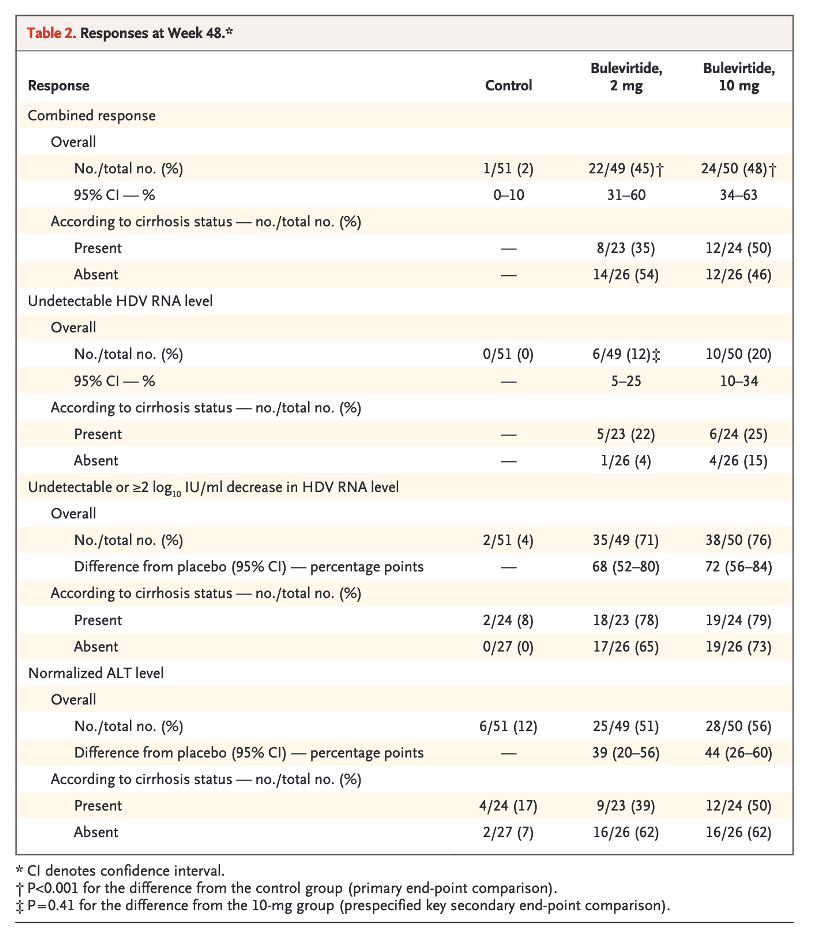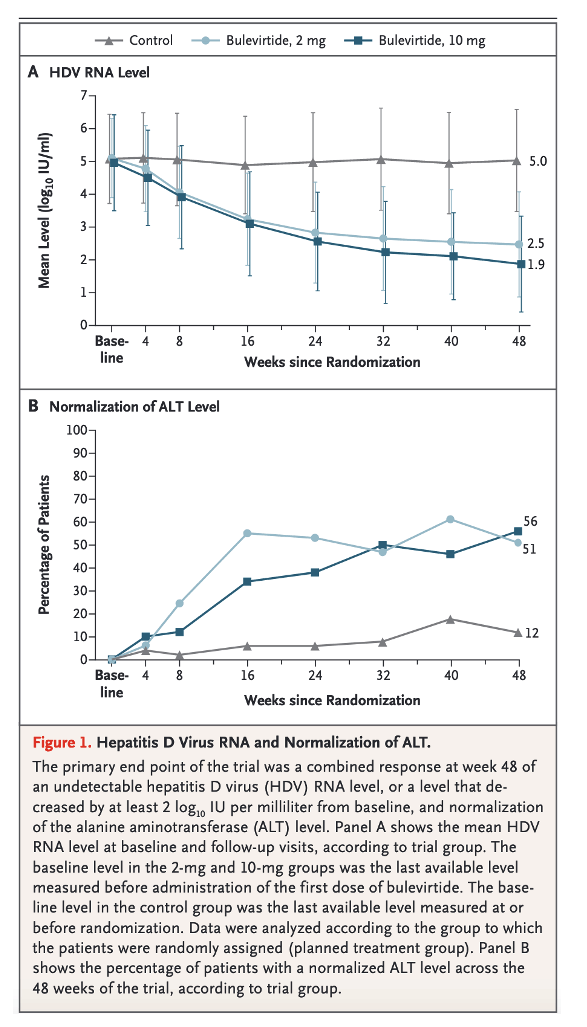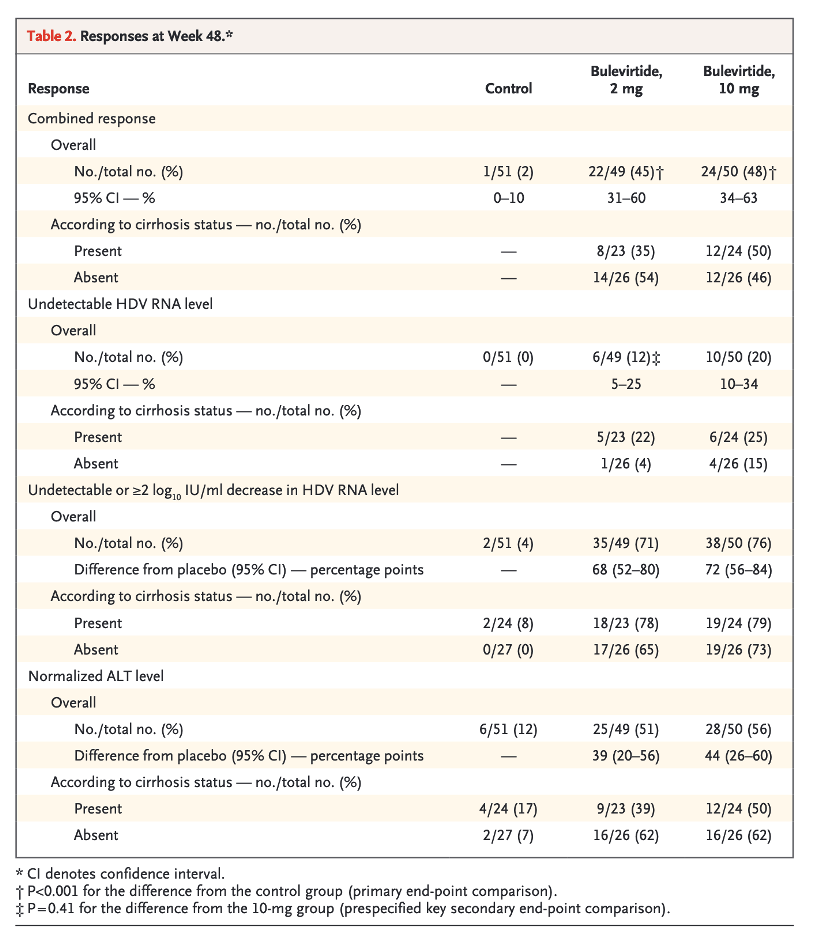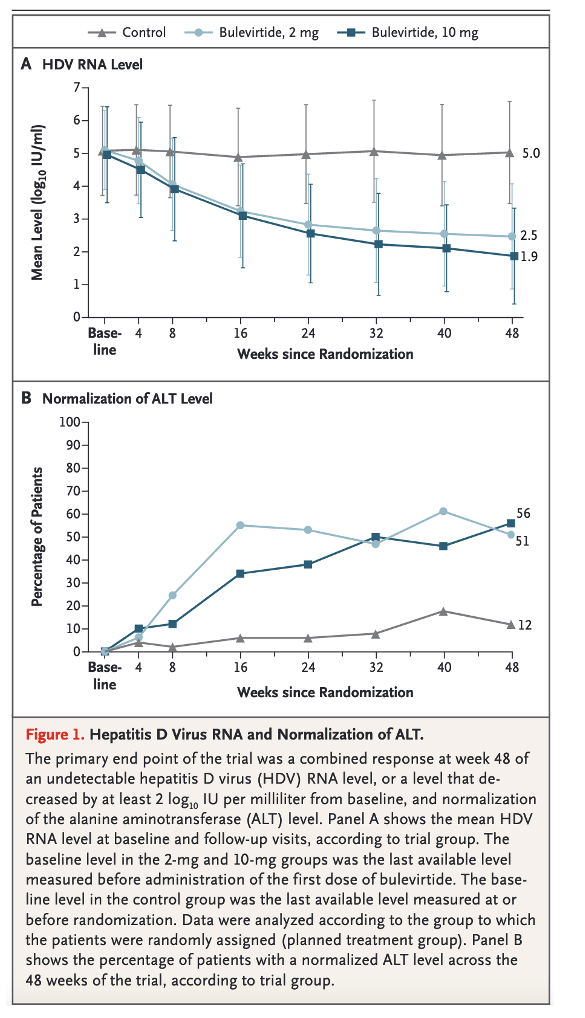 |
 |
 |
| |
A Phase 3, Randomized Trial of Bulevirtide in Chronic Hepatitis D
|
| |
| |
NEJM June 22 2023
Download the PDF
Abstract
Background
Coinfection with hepatitis D virus (HDV) accelerates the progression of liver disease associated with chronic hepatitis B. Bulevirtide inhibits the entry of HDV into hepatocytes.
Methods
In this ongoing phase 3 trial, patients with chronic hepatitis D, with or without compensated cirrhosis, were randomly assigned, in a 1:1:1 ratio, to receive bulevirtide subcutaneously at 2 mg per day (2-mg group) or 10 mg per day (10-mg group) for 144 weeks or to receive no treatment for 48 weeks followed by bulevirtide subcutaneously at 10 mg per day for 96 weeks (control group). Patients will complete 96 weeks of additional follow-up after the end of treatment. The primary end point was a combined response at week 48 of an undetectable HDV RNA level, or a level that decreased by at least 2 log10 IU per milliliter from baseline, and normalization of the alanine aminotransferase (ALT) level. The key secondary end point was an undetectable HDV RNA level at week 48, in a comparison between the 2-mg group and the 10-mg group.
Results
A total of 49 patients were assigned to the 2-mg group, 50 to the 10-mg group, and 51 to the control group. A primary end-point response occurred in 45% of patients in the 2-mg group, 48% in the 10-mg group, and 2% in the control group (P<0.001 for the comparison of each dose group with the control group). The HDV RNA level at week 48 was undetectable in 12% of patients in the 2-mg group and in 20% in the 10-mg group (P=0.41). The ALT level normalized in 12% of patients in the control group, 51% in the 2-mg group (difference from control, 39 percentage points [95% confidence interval {CI}, 20 to 56]), and 56% in the 10-mg group (difference from control, 44 percentage points [95% CI, 26 to 60]). Loss of hepatitis B virus surface antigen (HBsAg) or an HBsAg level that decreased by at least 1 log10 IU per milliliter did not occur in the bulevirtide groups by week 48. Headache, pruritus, fatigue, eosinophilia, injection-site reactions, upper abdominal pain, arthralgia, and asthenia were more common in the 2-mg and 10-mg groups combined than in the control group. No treatment-related serious adverse events occurred. Dose-dependent increases in bile acid levels were noted in the 2-mg and 10-mg groups.
Conclusions
After 48 weeks of bulevirtide treatment, HDV RNA and ALT levels were reduced in patients with chronic hepatitis D. (Funded by Gilead Sciences; MYR 301 ClinicalTrials.gov number, NCT03852719. opens in new tab.)




|
| |
|
 |
 |
|
|